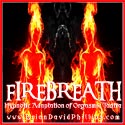
How the 4-7-8 Technique Can Transform Your Mind, Body, and Soul!
Empower Your Breath, Empower Your Life
Enhancing Well-Being with the 4-7-8 Technique

Breathing is a fundamental physiological process that plays a vital role in our overall well-being. It is not only essential for supplying oxygen to our body but also serves as a powerful tool to manage stress, promote relaxation, and improve sleep quality. One specific breathing technique that has gained significant attention in recent years is the 4-7-8 breathing pattern.
The 4-7-8 breathing pattern, also known as “relaxing breath,” is a simple yet powerful breathing technique that involves inhaling for 4 counts, holding the breath for 7 counts, and exhaling slowly for 8 counts. This technique is rooted in ancient yogic practices and has been popularized by Dr. Andrew Weil, a renowned integrative medicine physician. The 4-7-8 breathing pattern is gaining recognition for its potential benefits in managing anxiety, promoting relaxation, alleviating insomnia, and addressing other problems.
In today’s fast-paced and stress-filled world, anxiety has become a common challenge for many individuals. It can manifest in various forms, such as generalized anxiety disorder, panic disorder, social anxiety, and post-traumatic stress disorder (PTSD), among others. The physical, mental, and emotional impacts of anxiety can significantly affect one’s quality of life. However, the good news is that the 4-7-8 breathing pattern has shown promising results in helping manage anxiety symptoms.
Relaxation is crucial for maintaining a balanced state of mind and body. It allows the body to recover from the effects of stress, promotes mental clarity, and enhances overall well-being. The 4-7-8 breathing pattern has been recognized as a simple yet effective technique for inducing relaxation by engaging the body’s parasympathetic nervous system, also known as the “rest and digest” response.
Quality sleep is essential for our physical and mental health, but insomnia, or difficulty sleeping, is a common problem that affects many individuals. Insomnia can have detrimental effects on daily functioning, mood, and overall quality of life. The 4-7-8 breathing pattern has been found to be a valuable tool in improving sleep quality by relaxing the mind and body, and facilitating a more restful sleep.
Furthermore, the 4-7-8 breathing pattern has shown potential for addressing other problems beyond anxiety, relaxation, and insomnia. It has been used as a tool for managing stress, reducing anger and frustration, and alleviating pain in various situations and populations.
In light of the growing interest in the 4-7-8 breathing pattern and its potential benefits, this essay aims to explore in-depth how this technique can help with anxiety management, relaxation promotion, insomnia alleviation, and other problems. By reviewing relevant research studies, discussing the physiological mechanisms, and analyzing real-life applications, this essay will provide a comprehensive understanding of the 4-7-8 breathing pattern as a simple yet effective self-care tool. Understanding the potential benefits of this technique can empower individuals to incorporate it into their daily routine and improve their mental and physical well-being.
Origins Unfolded
Unveiling the Ancient Roots of the 4-7-8 Breathing Pattern

The 4-7-8 breathing pattern traces its roots back to ancient yogic practices, where controlled breathing has been utilized for centuries as a tool for calming the mind and promoting relaxation. In yoga, this breathing technique is known as “pranayama,” which means “breath control” in Sanskrit. Pranayama is an integral part of traditional yoga practices, aimed at balancing the body’s energy, calming the nervous system, and achieving a state of deep relaxation.
The modern-day popularity of the 4-7-8 breathing pattern can be credited to Dr. Andrew Weil, a renowned integrative medicine physician and a proponent of holistic health approaches. Dr. Weil introduced the 4-7-8 breathing pattern to a wider audience through his best-selling book “Breathing: The Master Key to Self-Healing,” and his widely recognized website and teachings on integrative medicine. Dr. Weil has extensively promoted the 4-7-8 breathing pattern as a simple and effective technique for managing stress, anxiety, and promoting relaxation.
The 4-7-8 breathing pattern is based on the principles of diaphragmatic breathing, which involves taking deep breaths that engage the diaphragm, a large muscle located between the chest and the abdomen. Diaphragmatic breathing is known to activate the body’s parasympathetic nervous system, which is responsible for the “rest and digest” response. This response helps counteract the effects of stress and promotes relaxation, leading to a reduction in heart rate, blood pressure, and stress hormones.
The 4-7-8 breathing pattern specifically involves inhaling through the nose for a count of 4, holding the breath for a count of 7, and exhaling slowly through the mouth for a count of 8. This specific ratio of breath counts is designed to regulate the inhale, hold, and exhale phases, creating a harmonious rhythm that promotes relaxation and calmness.
The simplicity and ease of practice of the 4-7-8 breathing pattern have made it accessible to a wide range of individuals, regardless of age, fitness level, or experience with breathwork. It can be practiced anywhere, anytime, and does not require any special equipment, making it a convenient self-care tool for managing stress and promoting relaxation in various settings.
As the 4-7-8 breathing pattern gains more recognition and popularity, researchers and healthcare professionals have started to explore its potential benefits and mechanisms of action. Through scientific studies, anecdotal evidence, and clinical observations, the origins and background of the 4-7-8 breathing pattern have been further illuminated, providing insights into its potential applications for anxiety management, relaxation promotion, insomnia alleviation, and other problems.
Mastering the Art of Breathing
Understanding the Physiology of the 4-7-8 Technique

Breathing is a complex physiological process that involves the coordinated action of various muscles and systems in the body. Understanding the physiology of breathing is essential to grasp how the 4-7-8 breathing pattern can positively impact anxiety, relaxation, insomnia, and other problems.
At the core of breathing is the diaphragm, a dome-shaped muscle located at the base of the lungs. When the diaphragm contracts, it moves downward, creating a vacuum that draws air into the lungs. This is known as inhalation or inspiration. Conversely, when the diaphragm relaxes, it moves upward, pushing air out of the lungs, which is known as exhalation or expiration. This rhythmic contraction and relaxation of the diaphragm, along with the interplay of other muscles such as the intercostal muscles between the ribs, allow for the inhalation and exhalation of air.
The process of breathing is controlled by the respiratory center located in the brainstem, which monitors the levels of oxygen and carbon dioxide in the blood and adjusts the rate and depth of breathing accordingly. When the body is under stress or facing a threat, the sympathetic nervous system, also known as the “fight or flight” response, is activated, leading to increased heart rate, blood pressure, and rapid, shallow breathing. On the other hand, the parasympathetic nervous system, also known as the “rest and digest” response, promotes relaxation, and slows down the heart rate, blood pressure, and breathing rate.
The 4-7-8 breathing pattern specifically engages the diaphragm and encourages slower, deeper breaths, which can have a direct impact on the body’s physiological responses. Deep breathing allows for more oxygen to be taken in and more carbon dioxide to be expelled, leading to a better exchange of gases in the lungs and increased oxygenation of the blood. This can help to reduce the physiological effects of stress, such as elevated heart rate and blood pressure, and promote a sense of calmness and relaxation.
Furthermore, the 4-7-8 breathing pattern incorporates a longer exhalation phase, which activates the vagus nerve, a key component of the parasympathetic nervous system. The vagus nerve plays a crucial role in promoting relaxation and reducing stress by sending signals to various organs in the body to slow down and relax, including the heart, lungs, and digestive system. This can result in a decrease in heart rate, blood pressure, and stress hormones, leading to a greater state of relaxation and decreased anxiety.
The practice of the 4-7-8 breathing pattern also involves breath holding during the “7” count, which can help increase carbon dioxide levels in the blood. This can have a calming effect on the body, as an increased concentration of carbon dioxide in the blood can stimulate the production of a neurotransmitter called gamma-aminobutyric acid (GABA), which has a calming effect on the brain and can help reduce anxiety.
BREATHING
TECHNIQUE
 Let me pause here to discuss specificaly how to actually do 4-7-8 BREATHING for relaxation, stress reduction, anxiety relief, insomnia help, and more (I am including my video on the subject in a later section of this essay).
Let me pause here to discuss specificaly how to actually do 4-7-8 BREATHING for relaxation, stress reduction, anxiety relief, insomnia help, and more (I am including my video on the subject in a later section of this essay).
It is a very simple yet very effective technique.
This is a method taught by a number of leading healthcare and psychology professionals. Some of you may have been exposed to it through the work of Dr. Andrew Weil – http://www.drweil.com – and others.
The 4-7-8 Breathing Exercise (also called the Relaxing Breath), and Breath Counting – try this breathing teachnique and see how it affects your stress and anxiety levels.
This breathing exercise is utterly simple, takes almost no time, requires no equipment and can be done anywhere. Although you can do the exercise in any position, sit with your back straight while learning the exercise. Place the tip of your tongue against the ridge of tissue just behind your upper front teeth, and keep it there through the entire exercise. You will be exhaling through your mouth around your tongue; try pursing your lips slightly if this seems awkward.
- Exhale completely through your mouth, making a whoosh sound.
- Close your mouth and inhale quietly through your nose to a mental count of four.
- Hold your breath for a count of seven.
- Exhale completely through your mouth, making a whoosh sound to a count of eight.
- This is one breath. Now inhale again and repeat the cycle three more times for a total of four breaths.
Note that you always inhale quietly through your nose and exhale audibly through your mouth. The tip of your tongue stays in position the whole time. Exhalation takes twice as long as inhalation. The absolute time you spend on each phase is not important; the ratio of 4:7:8 is important. If you have trouble holding your breath, speed the exercise up but keep to the ratio of 4:7:8 for the three phases. With practice you can slow it all down and get used to inhaling and exhaling more and more deeply.
This exercise is a natural tranquilizer for the nervous system. Unlike tranquilizing drugs, which are often effective when you first take them but then lose their power over time, this exercise is subtle when you first try it but gains in power with repetition and practice. Do it at least twice a day. You cannot do it too frequently. Do not do more than four breaths at one time for the first month of practice. Later, if you wish, you can extend it to eight breaths. If you feel a little lightheaded when you first breathe this way, do not be concerned; it will pass.
Once you develop this technique by practicing it every day, it will be a very useful tool that you will always have with you. Use it whenever anything upsetting happens – before you react. Use it whenever you are aware of internal tension. Use it to help you fall asleep. This exercise cannot be recommended too highly. Everyone can benefit from it.
I hope that has been helpful . . . or at least fun.
Understanding the physiology of breathing and how the 4-7-8 breathing pattern specifically impacts the body’s physiological responses provides a scientific basis for its potential effectiveness in managing anxiety, promoting relaxation, alleviating insomnia, and addressing other problems. The interplay between the diaphragm, the respiratory center in the brainstem, the sympathetic and parasympathetic nervous systems, and the role of carbon dioxide and neurotransmitters all contribute to the positive effects of the 4-7-8 breathing pattern on the body’s physiology.
Unlocking Serenity
The Relaxation Promotion Potential of the 4-7-8 Breathing Pattern

Relaxation is a crucial aspect of maintaining mental and physical well-being. Chronic stress and tension can negatively impact health and contribute to various health issues, including anxiety, insomnia, and even cardiovascular problems. The 4-7-8 breathing pattern can be a powerful tool for promoting relaxation, helping individuals to unwind, de-stress, and achieve a state of calmness.
The slow, deep breaths involved in the 4-7-8 breathing pattern can activate the body’s relaxation response, which helps counteract the effects of stress and tension. Deep breathing can help slow down the heart rate, lower blood pressure, and reduce muscle tension, which are common physiological responses to stress. By engaging in intentional, slow breaths, individuals can help their bodies enter a state of relaxation, allowing them to let go of stress and tension.
The 4-7-8 breathing pattern can also help individuals promote relaxation by shifting the focus away from racing thoughts and worries. By directing attention to the breath and the counting rhythm of the pattern, individuals can create a sense of mindfulness and present-moment awareness, which can help quiet the mind and reduce mental chatter. This can lead to a state of mental calmness and relaxation, allowing individuals to experience a sense of tranquility.
Furthermore, the breath holding phase during the “7” count in the 4-7-8 breathing pattern can help promote relaxation. Breath holding can increase carbon dioxide levels in the blood, which can help regulate the pH balance and stimulate the production of GABA, a neurotransmitter known for its calming effects on the brain. This can contribute to a greater sense of relaxation and calmness.
In addition to its physiological effects, the 4-7-8 breathing pattern can also be combined with other relaxation techniques, such as progressive muscle relaxation or visualization, to enhance its relaxation-promoting effects. By incorporating the 4-7-8 breathing pattern into a comprehensive relaxation routine, individuals can create a synergistic effect that promotes relaxation at multiple levels, including physical, mental, and emotional.
Practicing the 4-7-8 breathing pattern regularly as part of a relaxation routine can lead to long-term benefits. With consistent practice, individuals can train their bodies and minds to respond to stress and tension with a calmer, more relaxed state, which can improve overall well-being and resilience to stressors in everyday life.
In summary, the 4-7-8 breathing pattern can be an effective tool for promoting relaxation by activating the body’s relaxation response, promoting mindfulness, regulating physiological processes, and enhancing other relaxation techniques. By incorporating the 4-7-8 breathing pattern into a regular relaxation routine, individuals can experience the benefits of relaxation, including reduced stress, improved mental clarity, and enhanced overall well-being.
Calm Amidst Chaos
How the 4-7-8 Breathing Pattern Helps with Anxiety Management

Anxiety is a common mental health condition that affects millions of people worldwide. It is characterized by persistent feelings of worry, fear, and unease, often accompanied by physical symptoms such as increased heart rate, rapid breathing, and muscle tension. Managing anxiety is crucial to maintain overall well-being, and the 4-7-8 breathing pattern has emerged as a potential tool for anxiety management.
The 4-7-8 breathing pattern can help manage anxiety by activating the body’s relaxation response through its impact on the physiological processes of breathing. When practiced regularly, the slow, deep breaths involved in the 4-7-8 pattern can help activate the parasympathetic nervous system, which promotes relaxation and counteracts the effects of the sympathetic nervous system, which is responsible for the “fight or flight” response.
One key aspect of the 4-7-8 breathing pattern that makes it effective for anxiety management is the extended exhalation phase during the “8” count. This prolonged exhalation engages the vagus nerve, which can help regulate heart rate, blood pressure, and other bodily functions that can be heightened during anxiety. Activating the vagus nerve can also increase the production of GABA, a neurotransmitter known for its calming effects on the brain. This can lead to a reduction in anxiety symptoms, helping individuals feel more relaxed and at ease.
The breath holding phase during the “7” count in the 4-7-8 breathing pattern also plays a role in anxiety management. Breath holding can increase carbon dioxide levels in the blood, which can help regulate the pH balance and stimulate the production of GABA. This can help calm the brain and reduce symptoms of anxiety, such as racing thoughts and a sense of impending doom.
In addition to its impact on physiological processes, the 4-7-8 breathing pattern can also serve as a mindfulness technique, shifting the focus from anxious thoughts to the rhythm and sensation of the breath. By directing attention to the breath and engaging in intentional breathing, individuals can create a sense of mindfulness and present-moment awareness, which can help break the cycle of anxious thoughts and promote a state of calmness.
Furthermore, the simplicity and accessibility of the 4-7-8 breathing pattern make it a convenient tool for managing anxiety in various settings. It can be practiced anywhere, at any time, without the need for special equipment or extensive training. This makes it particularly useful for individuals who may experience anxiety in public settings or who may not have access to other anxiety management techniques.
In conclusion, the 4-7-8 breathing pattern has the potential to be an effective tool for managing anxiety by activating the body’s relaxation response, regulating physiological processes, promoting mindfulness, and offering convenience and accessibility. By incorporating the 4-7-8 breathing pattern into a daily routine, individuals with anxiety can potentially experience a reduction in symptoms and an increased sense of calmness and relaxation.
Sweet Dreams Await
Insomnia Alleviation with the 4-7-8 Breathing Pattern

Insomnia, a common sleep disorder characterized by difficulty falling asleep or staying asleep, can have a significant impact on an individual’s overall well-being and quality of life. Poor sleep can lead to daytime sleepiness, mood disturbances, decreased cognitive function, and other health issues. The 4-7-8 breathing pattern can be a helpful technique for alleviating insomnia and improving sleep quality.
One of the main reasons why the 4-7-8 breathing pattern can be effective for insomnia alleviation is because it promotes relaxation, which can be beneficial for individuals struggling with sleep difficulties. As discussed earlier, the slow, deep breaths involved in the 4-7-8 breathing pattern activate the body’s relaxation response, helping to lower heart rate, blood pressure, and muscle tension. This can create a state of physical and mental relaxation that can facilitate falling asleep and staying asleep.
In addition, the 4-7-8 breathing pattern can help individuals to redirect their focus away from racing thoughts and worries that often contribute to insomnia. By engaging in the rhythmic counting and intentional breathing of the pattern, individuals can shift their attention from stressful thoughts and bring their focus to the breath and the present moment. This can help calm an overactive mind and reduce mental arousal, making it easier to relax and fall asleep.
Furthermore, the breath holding phase during the “7” count in the 4-7-8 breathing pattern can also have a positive impact on sleep. Breath holding can increase carbon dioxide levels in the blood, which can stimulate the production of adenosine, a neurotransmitter known for its sleep-promoting effects. Adenosine helps regulate sleep-wake cycles and promotes drowsiness, making it easier to fall asleep and stay asleep.
Consistent practice of the 4-7-8 breathing pattern as part of a bedtime routine can help regulate the body’s sleep-wake cycle and improve sleep quality over time. By creating a calming bedtime routine that includes the 4-7-8 breathing pattern, individuals can signal to their bodies that it is time to wind down and prepare for sleep. This can help establish healthy sleep patterns and alleviate insomnia.
It’s worth noting that the 4-7-8 breathing pattern is not a standalone treatment for insomnia and should be used in conjunction with other sleep hygiene practices, such as maintaining a consistent sleep schedule, creating a conducive sleep environment, and avoiding stimulants before bedtime. However, incorporating the 4-7-8 breathing pattern into a comprehensive sleep routine can be a beneficial strategy for individuals struggling with insomnia, helping them to relax, calm their minds, and improve their overall sleep quality.
In conclusion, the 4-7-8 breathing pattern can be a helpful technique for alleviating insomnia by promoting relaxation, redirecting focus, and regulating the sleep-wake cycle. When used in conjunction with other sleep hygiene practices, the 4-7-8 breathing pattern can be a valuable tool for individuals seeking to improve their sleep quality and overcome insomnia.
Beyond the Obvious
Exploring Other Applications of the Versatile 4-7-8 Breathing Pattern

In addition to anxiety management, relaxation promotion, insomnia alleviation, and consensual adult erotic applications, the 4-7-8 breathing pattern can also have other diverse applications in various aspects of life.
Stress Reduction: The 4-7-8 breathing pattern can be used as a powerful tool for stress reduction in everyday life. When faced with stressful situations, individuals can practice the 4-7-8 breathing pattern to activate the relaxation response and calm the nervous system. By taking slow, deep breaths and exhaling fully, individuals can release tension, lower cortisol levels, and reduce the impact of stress on the body and mind.
Performance Enhancement: The 4-7-8 breathing pattern can be applied to enhance performance in various domains, such as sports, public speaking, and artistic performances. By regulating the breath, individuals can increase oxygenation, improve focus, and manage anxiety or nervousness. This can lead to improved performance, increased confidence, and better overall outcomes.
Mindfulness and Meditation: The 4-7-8 breathing pattern can be used as a tool for mindfulness and meditation practices. By bringing attention to the breath and practicing the deliberate and mindful inhaling, holding, and exhaling of breaths, individuals can cultivate present-moment awareness and deepen their meditation practice. The 4-7-8 breathing pattern can assist individuals in accessing a state of calm and presence, enhancing the benefits of mindfulness and meditation.
Emotional Regulation: The 4-7-8 breathing pattern can also be employed to regulate emotions and manage difficult emotions such as anger, frustration, or sadness. By taking slow, deep breaths and focusing on the breath, individuals can activate the relaxation response, lower arousal levels, and create space for emotional regulation. This can help individuals to respond to emotional triggers with greater clarity and calmness, leading to more balanced emotional responses.
Sleep Enhancement: Apart from alleviating insomnia, the 4-7-8 breathing pattern can also be used to enhance the quality of sleep. By practicing the pattern before bedtime, individuals can relax their bodies and minds, signal to the body that it is time to wind down, and promote a more restful and rejuvenating sleep. This can lead to improved sleep quality and overall well-being.
General Relaxation and Self-Care: The 4-7-8 breathing pattern can be practiced as a form of general relaxation and self-care in everyday life. It can be used as a quick and effective technique to manage stress, reduce tension, and promote a sense of calm and well-being. It can be practiced at any time, in any place, and does not require any special equipment, making it a convenient and accessible tool for self-care and relaxation.
In conclusion, the 4-7-8 breathing pattern has a wide range of applications beyond anxiety management, relaxation promotion, insomnia alleviation, and consensual adult erotic activities. It can be utilized for stress reduction, performance enhancement, mindfulness and meditation, emotional regulation, sleep enhancement, and general relaxation and self-care. The versatility and simplicity of the 4-7-8 breathing pattern make it a valuable tool that can be incorporated into various aspects of life to promote well-being, relaxation, and overall health.
Deepening Connection: Exploring Couple’s Intimacy Exercises with the 4-7-8 Technique

Yes, you really can use eroticatrance or erotic trancework hypnosis work . . . to explore things sensual.
As far as hypnosis goes, I do quite a bit of work developing hypnotic processes to ecstatic trance results and intimacy enhancement.
Intimacy is a vital aspect of romantic relationships, and nurturing emotional connection and closeness with one’s partner can greatly enhance the quality of the relationship. The 4-7-8 breathing pattern can be a valuable exercise for couples to promote intimacy and emotional bonding, fostering a deeper sense of connection and understanding with each other.
The 4-7-8 breathing pattern can be used as a shared exercise between partners, where they sit or lie down facing each other in a comfortable and relaxed position. The exercise can start with both partners taking a few deep breaths to calm their minds and bodies, and then syncing their breathing together. They can then begin the 4-7-8 breathing pattern in unison, inhaling slowly through the nose for a count of four, holding the breath for a count of seven, and exhaling slowly through the mouth for a count of eight. This synchronized breathing can create a sense of harmony and connection between partners, as they share a rhythmic and intimate experience together.
The deep, slow breaths of the 4-7-8 pattern can induce a state of relaxation in both partners, helping them to release tension and stress. This can create a safe and calming atmosphere that encourages open communication and vulnerability. As partners relax through the breathing exercise, they may feel more comfortable expressing their thoughts, feelings, and emotions with each other. This can deepen their emotional intimacy and strengthen their bond as they share and connect on a deeper level.
The 4-7-8 breathing pattern can also help couples to regulate their emotions and manage any potential conflicts or disagreements. When partners engage in slow, intentional breathing, they activate the body’s relaxation response, which can help reduce feelings of anger, frustration, or tension. This can create a space for constructive communication and problem-solving, as partners are less likely to react impulsively or become defensive. The breathing exercise can serve as a tool for partners to regulate their emotions and approach challenging situations with a calmer and more balanced mindset, promoting healthy communication and intimacy in the relationship.
Moreover, the 4-7-8 breathing pattern can enhance the physical intimacy between partners. Deep breathing can increase oxygenation in the body and promote relaxation, which can help partners to be more present and attuned to their physical sensations during intimate moments. The synchronized breathing in the 4-7-8 pattern can also create a sense of rhythm and connection between partners, fostering a deeper sense of intimacy and closeness. The shared experience of the breathing exercise can create a unique and intimate moment for couples, helping them to connect on a physical, emotional, and spiritual level.
In conclusion, the 4-7-8 breathing pattern can be a powerful exercise for couples to promote intimacy and emotional connection. By engaging in synchronized breathing, partners can create a sense of harmony and relaxation, fostering open communication, emotional regulation, and physical intimacy. Incorporating the 4-7-8 breathing pattern into a couple’s routine can be a valuable tool for strengthening their relationship and deepening their intimacy, ultimately contributing to a healthier and more fulfilling partnership.
Brian David Phillips
I am particularly interested in adapting traditional methods to contemporary hypnotic methods as well as in creating wholly original methods outside of the traditional model.
Here’s just a sampling of work I have done over the years to very good effect.
4-7-8 Breathing Technique
https://www.youtube.com/watch?v=UvWb1JqprJY
You can also see the video at https://www.youtube.com/watch?v=UvWb1JqprJY.
Breathing Love Trance Time
You can also see the video at https://www.youtube.com/watch?v=r3AqJiaDmtU.
Orgasms from Breathing, Really?
You can also see the video at https://www.youtube.com/watch?v=ePEM08WVP8Y.
This is just the tip of the iceberg as you might know from my videos and more.
Sensual Serenity: Consent-Driven Erotic Applications of the 4-7-8 Breathing Pattern
Breathing exercises, including the 4-7-8 breathing pattern, can also be applied in the context of consensual adult erotic activities to enhance intimacy, connection, and pleasure. The deliberate and mindful use of breath can heighten sensory awareness, deepen relaxation, and increase arousal, adding a new dimension to erotic experiences.
When practiced consciously, the 4-7-8 breathing pattern can help individuals to relax their bodies and minds, allowing them to be more present in the moment during intimate encounters. By taking slow, deep breaths, individuals can activate the parasympathetic nervous system, which promotes relaxation and reduces stress. This can help individuals to let go of tension and anxiety, creating a more receptive and enjoyable state for intimate activities.
The 4-7-8 breathing pattern can also be used to regulate arousal during consensual adult erotic activities. By controlling the breath, individuals can modulate their physiological responses, such as heart rate and blood pressure, and maintain a state of calm and relaxation even as arousal increases. This can help individuals to prolong the experience and manage any sensations of overwhelm or urgency, leading to a more pleasurable and fulfilling encounter.
In addition, the synchronized breathing involved in the 4-7-8 pattern can create a unique sense of intimacy and connection between partners during consensual adult erotic activities. As partners breathe together in unison, they can establish a rhythm and a shared experience, fostering a deep sense of connection and intimacy. This synchronized breathing can enhance the emotional and physical bond between partners, creating a sense of unity and closeness during intimate moments.
Furthermore, the 4-7-8 breathing pattern can be used to cultivate mindfulness during consensual adult erotic activities. By focusing on the breath, individuals can bring their attention to the present moment, heightening their sensory awareness and fully experiencing the sensations and pleasure of the moment. This mindfulness can enhance the overall intimacy and enjoyment of the experience, allowing individuals to fully immerse themselves in the present and connect with their own bodies and those of their partner(s) on a deeper level.
It is important to note that the application of the 4-7-8 breathing pattern or any other breathing techniques in consensual adult erotic activities should always be practiced with mutual consent, respect, and communication between all parties involved. It is essential to establish clear boundaries, communication, and consent before engaging in any intimate activities and to prioritize the comfort, safety, and well-being of all individuals involved.
In conclusion, the 4-7-8 breathing pattern can be applied in consensual adult erotic activities as a means to enhance intimacy, connection, and pleasure. By promoting relaxation, regulating arousal, fostering synchronization, and cultivating mindfulness, the 4-7-8 breathing pattern can contribute to a more enjoyable, fulfilling, and intimate experience in the context of consenting adult erotic activities. However, it is crucial to always prioritize mutual consent, communication, and respect in all intimate activities.
BREATHING ORGASMS
Now, on a related note, let me discuss the question of CAN ONE REALLY HAVE AN ORGASM JUST FROM BREATHING? and how Breatherotica Breathing Orgasms can be achieved.
Did you know you can orgasm from breathing? Seriously, you can. Oh, I’m not talking about the joy of breathing . . . we all breathe. Seriously, you should not stop breathing, just keep in breathing, it’s awesome and it’s oh so good for you. In fact, if you’re not breathing, that can kind of suck.
No, what I mean is focused breathing. This is a kind of breathing that allows you to go into a focused erotic state. I call it breatherotica and it’s actually very easy to learn. You just learn to let go and relax and drop yourself into a special altered state of consciousness that allows you to connect the act of breathing with the sensation of erotic response so in essence you are breathing in erotic feelings in a way that intensify and intensify and then go BOOM ORGASM.
Yes, I am very serious . . . yes, full on full body full mind full spirit oh so wonderful genuine accept no substitutions ORGASM just from breathing.
It’s easy to learn too. I know, there are folks out there teaching things like Tantric Firebreath or other methods who make claims that it takes years of practice to master the skill. Okay, if that’s the approach you want to take, go for it. However, in my comprehensive erotic hypnosis courses, we learn how to use breatherotica methods for ourselves and how to guide others into breathing orgasms in just a few minutes.
It isn’t complicated, it isn’t occult or difficult in anyway. In fact, it’s actually pretty straightforward (heck, in one interview, Lady Gaga once discussed how she came across her own similar method by accident after taking an acting class). You don’t have to take an acting class and you don’t have to experiment with trial and error, we teach very simple and very effective methods for this sort of thing. In fact, I’ve taught breatherotica methods of breathing orgasms to folks all over the planet, from Taiwan to the US to India to Japan and elsewhere. Soon, we will be in Australia to teach the methods as well.
Of course, those wishing to explore even more may consider learning packages such as our ErosPsyMagick+ program at https://briandavidphillips.net/erospsymagickplus which is of particular interest as it has everything rolled into one comprehensive package . . . seriously it’s the whole trancework kit-n-kaboodle.
Empower Your Life, Empower Your Breath
Enhancing Well-Being with the 4-7-8 Technique

The 4-7-8 breathing pattern is a simple yet powerful technique that can be used for a wide range of applications, including anxiety management, relaxation promotion, insomnia alleviation, consensual adult erotic activities, and other aspects of life. The origins and background of the 4-7-8 breathing pattern can be traced back to ancient practices, and its effectiveness in promoting relaxation and reducing anxiety has been supported by scientific research.
The physiology of breathing plays a crucial role in understanding how the 4-7-8 breathing pattern works. Slow, deep breaths with extended exhales activate the relaxation response and help regulate the autonomic nervous system, leading to a cascade of physiological changes that promote relaxation, reduce stress, and alleviate anxiety.
The 4-7-8 breathing pattern has been found to be effective in managing anxiety, promoting relaxation, alleviating insomnia, enhancing couples’ intimacy, and consensual adult erotic applications. It can also be used for stress reduction, performance enhancement, mindfulness and meditation, emotional regulation, sleep enhancement, and general relaxation and self-care.
In conclusion, the 4-7-8 breathing pattern is a versatile and accessible technique that can be applied in various aspects of life to promote relaxation, reduce anxiety, and improve well-being. Its simplicity and effectiveness make it a valuable tool for individuals seeking to manage stress, enhance performance, cultivate mindfulness, regulate emotions, improve sleep, and practice self-care. By incorporating the 4-7-8 breathing pattern into daily routines, individuals can harness its benefits for a healthier and more balanced life.
Frequently Asked Questions:
4-7-8 Breathing Pattern

Q: What is the 4-7-8 breathing pattern?
A: The 4-7-8 breathing pattern is a relaxation technique that involves inhaling deeply through the nose to the count of four, holding the breath for the count of seven, and exhaling slowly through the mouth to the count of eight.
Q: Where does the 4-7-8 breathing pattern originate from?
A: The 4-7-8 breathing pattern has its roots in ancient practices such as yoga and pranayama, which are traditional Indian breathing techniques aimed at promoting relaxation and well-being.
Q: How does the 4-7-8 breathing pattern work physiologically?
A: The 4-7-8 breathing pattern works by activating the relaxation response and regulating the autonomic nervous system. Slow, deep breaths with extended exhales stimulate the vagus nerve, which helps calm the body and mind, reducing stress and anxiety.
Q: What are the benefits of using the 4-7-8 breathing pattern for anxiety management?
A: The 4-7-8 breathing pattern can help manage anxiety by reducing the physiological symptoms of stress, such as increased heart rate and blood pressure, and promoting relaxation and calmness.
Q: How can the 4-7-8 breathing pattern promote relaxation?
A: The 4-7-8 breathing pattern promotes relaxation by triggering the relaxation response, which helps activate the body’s natural relaxation mechanisms, lowers stress hormones, and promotes a sense of calmness and well-being.
Q: Can the 4-7-8 breathing pattern be used to alleviate insomnia?
A: Yes, the 4-7-8 breathing pattern can be used to alleviate insomnia by calming the mind and body, reducing stress, and promoting relaxation, which can help individuals fall asleep faster and enjoy a more restful night’s sleep.
Q: How can the 4-7-8 breathing pattern be applied to enhance couples’ intimacy?
A: The 4-7-8 breathing pattern can be used as a couples’ intimacy exercise to deepen the connection between partners, promote relaxation and mindfulness, and create a more intimate and calming experience.
Q: Are there consensual adult erotic applications of the 4-7-8 breathing pattern?
A: Yes, the 4-7-8 breathing pattern can be used consensually in adult erotic activities as a way to enhance relaxation, focus, and intimacy, and deepen the mind-body connection.
Q: What are some other applications of the 4-7-8 breathing pattern?
A: In addition to anxiety management, relaxation promotion, insomnia alleviation, and couples’ intimacy, the 4-7-8 breathing pattern can also be applied for stress reduction, performance enhancement, mindfulness and meditation, emotional regulation, sleep enhancement, and general relaxation and self-care.
Q: Is the 4-7-8 breathing pattern suitable for everyone?
A: The 4-7-8 breathing pattern is generally safe and suitable for most people. However, it is always recommended to consult with a healthcare professional if you have any pre-existing health conditions or concerns.
Q: Can the 4-7-8 breathing pattern be used in combination with other relaxation techniques?
A: Yes, the 4-7-8 breathing pattern can be used in combination with other relaxation techniques such as mindfulness, meditation, progressive muscle relaxation, and guided imagery to enhance relaxation and well-being.
Q: Can the 4-7-8 breathing pattern be practiced anywhere and anytime?
A: Yes, one of the advantages of the 4-7-8 breathing pattern is that it can be practiced anywhere and anytime, making it a convenient and accessible relaxation tool that can be used in various settings, including at home, at work, or during travel, and even in public places.
Q: How long should I practice the 4-7-8 breathing pattern for optimal results?
A: The 4-7-8 breathing pattern can be practiced for as little as a few minutes or for longer durations, depending on individual preference and availability. Regular practice, even for short periods of time, can yield benefits in managing anxiety, promoting relaxation, and improving sleep.
Q: Are there any precautions or contraindications for practicing the 4-7-8 breathing pattern?
A: While the 4-7-8 breathing pattern is generally safe for most people, it is important to use caution if you have any pre-existing health conditions such as respiratory issues, cardiovascular problems, or other medical concerns. It is always recommended to consult with a healthcare professional before starting any new relaxation technique, including the 4-7-8 breathing pattern.
Q: Where can I learn more about trancework practice from Prof. Phillips?
A: Of course, those wishing to explore even more may consider learning packages such as our ErosPsyMagick+ program at https://briandavidphillips.net/erospsymagickplus which is of particular interest as it has everything rolled into one comprehensive package . . . core skills, metaphysical magickal psychic, and eroticatrance ecstatic states.
You Can Learn More

If you would like to learn more about using hypnosis techniques, consult our Core Skills program and other products found in our online store at https://briandavidphillips.net/store (you may wish to check out our package programs for even more value).
Our ErosPsyMagick+ program at https://briandavidphillips.net/erospsymagickplus is of particular interest as it has everything rolled into one comprehensive package . . . core skills, metaphysical magickal psychic, and eroticatrance ecstatic states.
If you’re in Taiwan and interested in hypnosis, check the services page linked to in the top left sidebar. Not in Taipei? Check the store for recordings in the same menu area as well as links to lots and lots of info and goodies. Of course, browsing this site will bring you to a digital ton of positive resources on a wide variety of topics as well.
Live Trance and Prosper,
Brian David Phillips
Trance Wizard
www.BrianDavidPhillips.net
Tarot Decks and More
https://www.makeplayingcards.com/sell/wakingdreams














